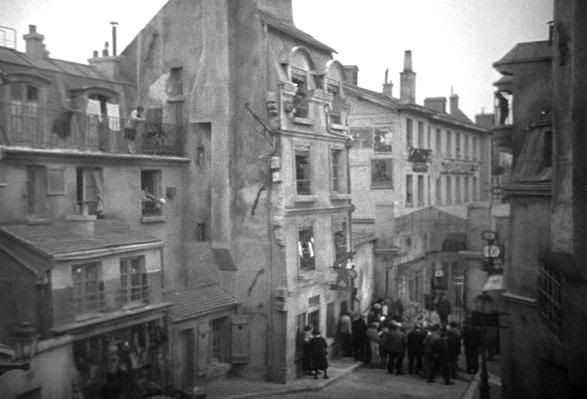 René Clair’s Le Million may well be my favourite musical ever, although it doesn’t fit the mould in the traditional sense – either way, it’s also one of my favourite films full stop, so it was only a matter of time before I got to another of Clair’s fabled early 1930s trio. So here I sit, having given the first of those flicks a spin…
René Clair’s Le Million may well be my favourite musical ever, although it doesn’t fit the mould in the traditional sense – either way, it’s also one of my favourite films full stop, so it was only a matter of time before I got to another of Clair’s fabled early 1930s trio. So here I sit, having given the first of those flicks a spin…Under the Roofs of Paris was Clair’s first venture into the world of sound, Much like Le Million, Paris forms something of a bridge between the silent film and the talkie, although it’s definitely rougher around the edges than that later masterwork. Paris’ greatest flaw is almost certainly its paper-thin excuse for a story, which sees a man (Albert) fall in love with a woman (Pola) only to go to prison and lose her to his best friend (Louis). It’s as simplistic as it sounds, and the plot mechanisms are all too evident: the robbery that leads to lead Albert’s imprisonment appears out of nowhere, and briskly propels the narrative forward by a month whereas previously it had focused on a 24hr period. Moreover, the explanation for Pola and Louis’ relationship is provided to us in that swift time slot – in other words, we don’t get much explanation at all and their so-called ‘love’ for one another comes across as distractingly undercooked. And then there’s the fact that all the characterisations bar Albert are similarly destitute: Louis is practically unknown to us; and Pola, the romantic interest of three characters in the film, is little more than a fickle whore. The intended ‘bittersweet’ ending is instead rendered purely sweet as a result of her irksome presence. Gaston Modot, the delightful actor who played a role in many of France’s greatest films of the 1930s (La Règle du jeu, L’Âge d’Or, La Grande illusion) makes a typically comical impression as the film’s ‘villain’ but is eventually sidelined in favour of the banal love story.
In spite of all this, I wouldn’t hesitate to describe Paris as a great film. This is primarily thanks to Clair, whose craftsmanship is on full display here. His experimentation with sound was still in its earliest stages (compare this to the smooth polish of Le Million) but already his creativity is more than apparent. One of the film’s earliest shots finds a camera panning across Clair’s artificial Parisian rooftops, before slowly descending towards ground level to uncover the source of the song that we hear on the soundtrack. With these opening minutes Clair already conveys his intent: to recall the greatness of the silent era whilst at once hinting towards the possibilities offered by sound. A number of bravura sequences bravely execute this objective: a bedroom sequence where Albert and Pola shout and bicker to hilarious effect despite being in the dark; a tussle between Albert and a pickpocket that takes place with appropriately-timed background music, thus playing like a Chaplinesque comedy sequence; or the climactic fight between Albert and Fred that takes place in darkness and without dialogue, but is accentuated by disorienting angles and the thunderous movements of a passing train.
Although the director’s mélange of mobile camerawork + song + slapstick + minimal dialogue succumbs to the occasional awkward moment, for the most part it’s a triumph that successfully creates the lyrical romanticism so absent in the screenplay. Clair’s envisioning of working-class Paris looks as if it’s ripped out from a picturebook, and this near-oneiric conception of the city – accordions, berets and all – does little in the way of providing substance to potentially serious concerns. This is not the most significant of hindrances however, because Paris functions best as another slice of that charming-yet-sophisticated brand of French confectionary that Clair seeks to recreate (Jean-Pierre Jeunet should take notes.) Taken as a whimsical romp through a working man’s daily affairs, one can see it as an early filmic embodiment of joie de vivre. Despite the setbacks, we’re informed at film’s end that life continues to plays on as if like a beautiful song. It’s an irresistible finale to a film that, despite its own setbacks, justifies its conclusions by enamouring us in its own world, if only for a brief moment in time.
No comments:
Post a Comment